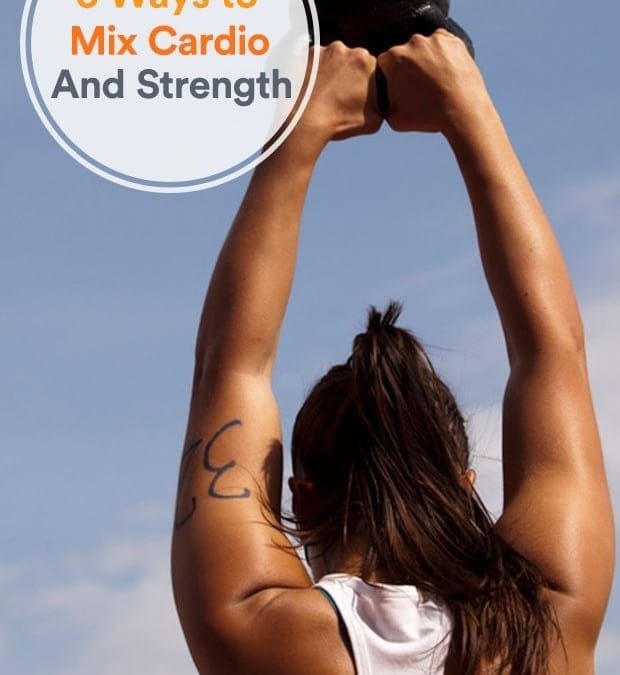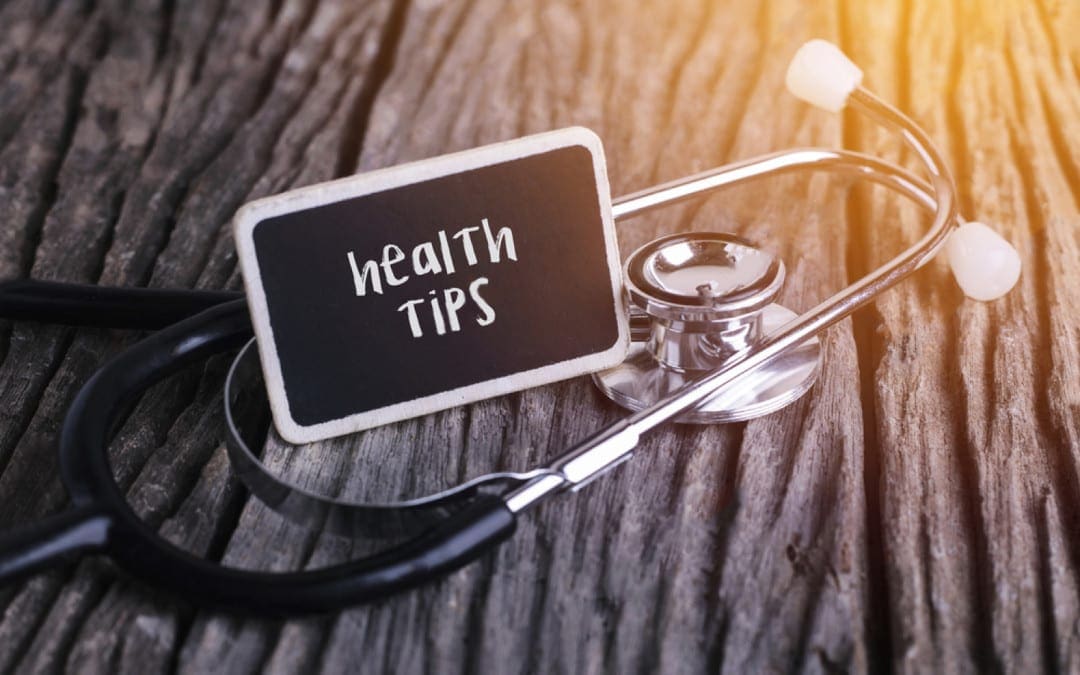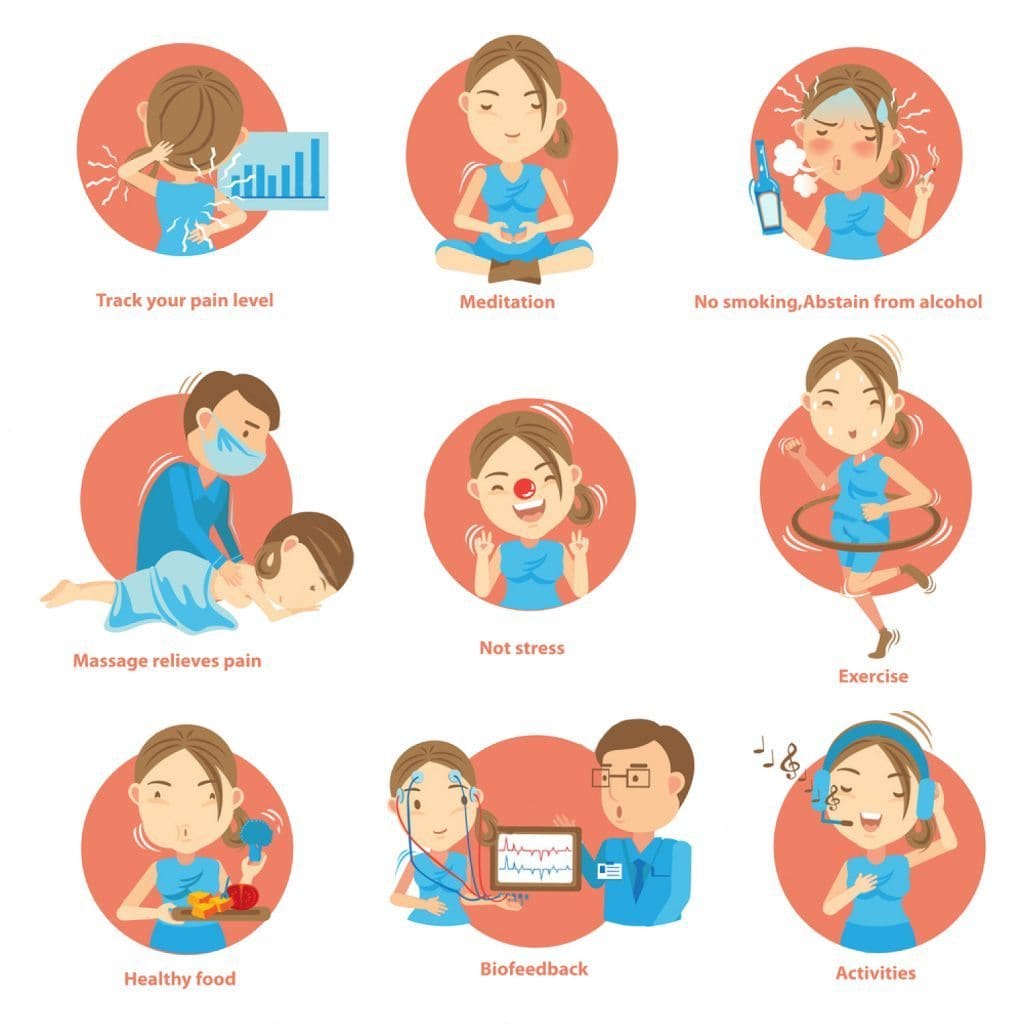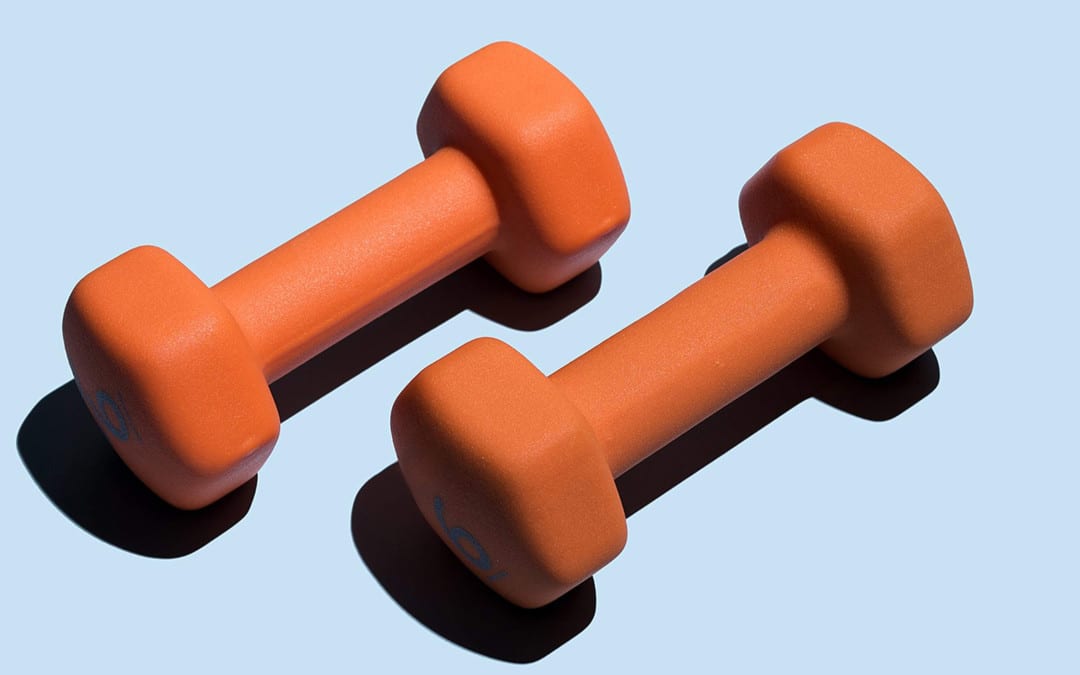Fitness
Back and Spinal Fitness at PUSH as Rx leads the field with a laser focus on supporting our youth sports programs. The PUSH-as-Rx System is a sport-specific athletic program designed by a strength-agility coach and physiology doctor with a combined 40 years of experience working with extreme athletes.
The program is the multidisciplinary study of reactive agility, body mechanics, and extreme motion dynamics at its core. A clear quantitative picture of body dynamics emerges through continuous and detailed assessments of the athletes in motion and under directly supervised stress loads.
Exposure to the biomechanical vulnerabilities is presented to our team. Immediately, we adjust our methods for our athletes to optimize performance. This highly adaptive system with continual dynamic adjustments has helped many of our athletes return faster, stronger, and ready post injury while safely minimizing recovery times.
Results demonstrate clear improved agility, speed, decreased reaction time with greatly improved postural-torque mechanics. PUSH-as-Rx offers specialized extreme performance enhancements to our athletes no matter the age.

by Dr Alex Jimenez DC, APRN, FNP-BC, CFMP, IFMCP | Fitness, Health, Wellness
This article originally appeared on DailyBurn.com.
Resistance training and cardio exercise can indeed co-exist. In fact, blending them together creates the ideal time-saving gym session. All you have to do is make a few intensity-amplifying tweaks to your existing strength workout and it can drive up your heart rate, burn more calories and improve your cardiovascular health, says New York City-based trainer Laura Miranda, DPT, CSCS, exercise physiologist. Get started on getting more from your workout by following these six strategies that marry weights and cardio. You just might find you’re having more fun, too.
RELATED: 6 Killer Cardio Workouts That Don’t Involve Running
6 Tips for Turning Up the Cardio on Your Strength Workout
1. Vary your rest.
The first way to spike your heart rate while strength training: Perform each move back to back with as little rest as possible — that is, while still maintaining good form. Miranda prefers a ladder approach to accomplish this goal. After the first round of resistance exercises, rest for 20 seconds. On the second set, rest for 15 seconds; and the third, pause for a 10-second break. As your body gets less and less time to recover, it taxes your aerobic system, she explains. Keep in mind, because you can’t lift at max weight with this many sets, it’s a good goal for fat loss, rather than strictly strength gains.
RELATED: 12 Brilliant Meal Prep Ideas to Save Time
2. Hold weights in both hands.
Rather than putting all your effort into single-arm movements for exercises like curls, rows or extensions, pick up two dumbbells or kettlebells. Then, go to town. Doing upper-body bilateral movements — like bicep curls with both hands moving at the same time — increases your heart rate more than when focusing on one arm at a time, according to a 2017 study in The Journal of Strength & Conditioning Research.
RELATED: 5 Sports-Inspired Drills That Totally Count as Cardio
3. Pepper in plyometrics.
Explosive movements — think squat jumps and jumping lunges — are super effective and efficient for cranking up your cardio, while still building muscle. To maximize the payoff of these powerful moves, perform at least 15 reps of each exercise. This can keep your heart rate elevated for up to 50 minutes post-exercise, according to one study.
Miranda also recommends combining plyos with a strength and coordination move to lessen some of the jarring impact on your body. For example: Do a dumbbell lateral lunge, followed by a bear crawl, then end with broad jumps. Take a brief rest before cycling through those three exercises again.
RELATED: 3 Plyometric Moves That Turn Up the Burn
4. Lighten your load.
In a traditional strength workout, you’d pick up a weight heavy enough that you could only do a few reps for up to 45 seconds, says Miranda. But to hit the sweet spot where lifting turns more aerobic, opt for lighter weights that allow you to perform a set for one to two minutes. You might even drop the weight altogether and work for longer periods (i.e. go from a weighted squat to simply bodyweight squats). Or, grab a set of five- to eight-pound weights and perform a move like dumbbell uppercuts for one minute. Trust us, it will burn.
RELATED: 3 Quick HIIT Workouts for Beginners
5. Try a two-fer.
Why do a squat or a bicep curl or an overhead press when you can be super efficient and do all three at once? Compound movements like this one require you to use more muscle groups, which gives you a greater metabolic boost, says Miranda. Even better, these multi-move exercises test your coordination. Some others to add to your exercise repertoire: a push-up with row, reverse lunge with triceps extensions, curtsy lunge with bicep curl or a glute bridge with chest press.
RELATED: 3 Exercises to Sculpt Your Entire Body
6. Go beyond everyday exercises.
No doubt you’ve done a burpee or 10. After all, they’re used in many workouts because they’re an efficient way to get your heart rate up between strength sets. “When you choose movements that your body is not used to doing — like getting on and off the floor, as you do for a burpee — it enhances the difficulty of your workout,” says Miranda. (Typically, we’re used to simply sitting, standing and walking.) A burpee requires you to use all major muscle groups at once, which is probably why research shows this move is nearly as good as bicycle sprints in terms of gaining cardiovascular benefits.
Another similar way to enhance the cardio challenge: Do moves that work your body in different planes of motion, says Miranda. For instance, a forward lunge, followed by a side lunge, then wrap it up with a backward lunge. “Our bodies are not used to moving in those sequences,” she says. Wood chops or 180 squat jumps will also do the trick. So not only will you feel your muscles getting fatigue, but you’ll breath heavy while you’re at it. A single workout for strength and cardio…you’re welcome.

by Dr Alex Jimenez DC, APRN, FNP-BC, CFMP, IFMCP | Fitness, Physical Rehabilitation, PUSH-as-Rx
Doctor of Chiropractic, Dr. Alexander Jimenez and PUSH as Rx Owner/Exercise Physiologist Daniel Alvarado discuss calisthenics or (gymnastic exercises to achieve bodily fitness and grace of movement.)
You�re not far off when thinking of calisthenics, in case you possess a mental picture of the military performing jumping jacks to cadence. The truth is , though, that calisthenics exercises are rooted much deeper in history, dating back all the way to ancient Greece. (More on that later.)
As it pertains to your own personal history, you likely first experienced work outs that were calisthenics in elementary school physical education class in the type of sit-ups, push ups, jumping jacks and other bodyweight exercises. Calisthenics, when performed actually help individuals serves at the same time as an aerobic type of exercise and gain muscle. Talk�about a timesaver.
Talking of that, with individuals�s time-crunched schedules, fitness plans seem to be largely focused on the best way to get the benefits of exercise in the least quantity of time. (That�s appropriate, one-minute workouts really are a thing.) Packing plenty of exercise, including plenty of bodyweight training, into a brief amount of time, is becoming fairly popular, as with PUSH-as-Rx �, CrossFit and programs like P90X�.
What I’d like to stress is that, as previously mentioned, this kind of workout is nothing new, although these workouts all attribute calisthenics to some amount. Actually, the American College of Sports Medicine reports that workplace wellness plans included calisthenics into worker breaks as far back as the 1960s. The purpose? To develop employees� mental and physical fitness. Sadly, the majority of our corporate structure today does not allow for extended time off in the centre of the day or week.
What Exactly Are Calisthenics Workouts?
Simply put, the calisthenics definition is utilizing your bodyweight and gravity to do exercises (some of which are quite extreme) using good form. What�s wonderful is the fact that it could include various actions such as for instance gymnastics and does not require a gym membership, Pilates squats, lunges for great legs, crunches, walking, just to name a number of calisthenics work out thoughts and jumping.
A common term for calisthenics today is bodyweight training. Irrespective of what you call it, this sort of training could possibly be the core of an exercise plan or utilized in conjunction with other training programs, including cardio workouts, HIIT workouts (including my Burst training), marathon or triathlon training, weight training or all sorts of other exercise. Mixing it up is a great strategy to ensure that you happen to be working your muscles all and provides a more healthy approach to fitness.
Varieties Of Calisthenics Work Outs
There are lots of types of calisthenics work outs; push-ups and pull ups are most common. Pushups are one of my personal favorite calisthenics exercises due to the fact that they build strength in numerous regions of the body and can be done everywhere. Without lifting one weight it’s possible for you to attain great muscle growth.
Performing push-ups, for example, strengthens the muscles in your chest, shoulders and triceps while also strengthening your core. You could add variety by doing push ups or including a clap between each one. Among my favorites is the spiderman pushup, which works the obliques by bringing the knee up towards the arm as you lower into the push up.
Pull-ups are excellent for working your back and biceps. The most famous design is with the palms facing forwards; however, the chin up, palms facing towards you, is a great challenge, too. While you can do these using a pull-up bar in the gym, you can also perform them having a sturdy tree branch or find a bar in a nearby park. There are several options readily available for installation in doorways of your home, too.
A different type of calisthenics workout is the abdominal work out. For many, having a six-pack is the supreme target. While having a six pack may be wonderful, it�s about losing stomach fat for an overall more healthy body extremely more.
There are various ab exercises which you can do to contract the muscles and work towards strengthening them. The push ups mentioned previously can help do this if you focus on contracting the muscles while performing the push-up. There are lots of exercises that are amazing for the stomach area stomach exercises, like the board, and hip lifts � all of which joined with integrated into your routine or may be achieved with your body weight, making these kinds of exercises great for a calisthenics work out on their very own.
Cardio is excellent because it supplies an opportunity to burn off calories, for burning fat. Running and cycling are great cardio workouts, but you can select exercises that could easily be incorporated right into a daily routine wherever you’re, for example high jumps or conventional jumping jacks.
Jumping jacks are great because they get the heart pumping � not only offering fat-burning benefits, but keeps the heart healthy. The entire body motion combined with bound provides an excellent total cardio to the body. If you’re unable to bound at this time or demand to work up to it, you can do a low impact variation by stretching one leg at time as the arms go overhead in the traditional jumping jack sort.
Most bootcamp workouts provide calisthenics-specific exercises and may be found at your local health club or you can do one in your family room. Blast training may be ideal for this which is just another kind of calisthenics workout.
I have a burst training workout for beginners right on my website. The majority of the Burstfit workouts offer astounding strength advantages from muscle toning to cardio and also a mix of the two and don’t use any gear. They are also helpful for the beginner and also the advanced supplying adjustments for several exercises.
6 Top Benefits Of A Calisthenics Workout
1. You Can Do Calisthenics Anywhere
This type of training may be performed anywhere because calisthenics could be done using just your bodyweight. Just what a beautiful thing. (Read between the lines: No explanations!) You can do an entire routine in the privacy of your home, in the fitness center or in a closeby park. I done short work outs in the airport.
There are numerous ways to execute calisthenics exercises at different levels. By way of example, a push up can be performed on the knees for newcomers. Over time, you can work as much as the toes and eventually add in side knee tucks or claps. The choices are many and will build muscle and stamina.
2. Calisthenics Can Help Provide Improved�Coordination
The Journal of Sports Rehabilitation published a study investigating how calisthenics and Pilates impact a person�s coordination. The participants comprised healthy females ages 25 to 50. The results indicated that calisthenic exercises were more likely to improve coordination after 3 and 6 months of training compared to Pilates. Pilates is amazing, but you may gain more from calisthenics, when you�re looking to increase coordination -kind exercises.
3. You Gain All-Over Muscle Tone
Calisthenics offers the capability to build amazing muscle tone and also you can pretty much take it as far as you want. Ever notice how some men in the gym appear to own a little back and legs, although arms, enormous chest and shoulders? This could happen when using special weights which are targeting particular muscles; nonetheless, using your own bodyweight can permit you to focus on total body tone and specific muscle tissues in once.
Typically, when lifting your personal body weight, it demands focus and involvement of many more muscles to ensure proper form. That means that all of those muscles are getting work which will lead to a more evenly distributed physique.
4. Provides�Support For Fitness Goals�& Other Sports
Calisthenics-type exercises really are a safe option since it puts less strain on the muscles and joints of the body. It really is recognized as a �natural� type of training because you might be utilizing your own bodyweight to do the exercises. That is not an injury-free guarantee, but with suitable form and gradual increase in strength, it could undoubtedly give a safer alternative for a fruitful workout.
Calisthenics work outs are perfect for adding strength without adding bulk. This really is often needed to be efficient at other sports along with helping prevent harm. To be able to be more efficient at running while minimizing the risk of harm endurance runners commonly must reinforce the hips. A study analyzed athletes by increasing their strength training but decreasing their total volume of training. The group that raised their strength training resulted in improved performance through improved muscle growth.
Another study found that results enhanced by enhancing endurance as a result of improved neuromuscular efficiency. This occurs when the nervous system uses while stabilizing the body in all three planes of motion, the right muscles reduce or to produce force.
The National Academy of Sports Medicine shares that resistance training, in this situation utilizing your own body weight, can improve running economy a significant component for endurance athletes such as for instance Ironman sportsmen and ultra trail runners, without additional mass.
5. It�s Perfect For Beginners�To Advanced
Calisthenics is perfect for anyone starting a physical fitness plan or someone who’s improved, but wants a more shredded physique. A beginner can begin a good application that can supply amazing gains, particularly if consistent; yet, make sure to choose a program which offers adjustments so that you could have alternatives which are right for you personally and at your degree, by starting slow. Starting at a too-advanced degree gets you at an increased risk of harm.
In terms of frequency, I’d propose 3 to 4 days per week to begin. Over time, you are able to work time periods that are longer and more exercises into your training schedule. An advanced exerciser can cultivate amazing overall body tone, muscle growth and strength by performing more extreme editions of calisthenics.
By way of example, if strength is a focus, an advanced exerciser could work towards performing one-handed push-ups. This will make an extraordinary quantity of muscle and strength development in the entire body for the reason that it requires extra focus and numerous muscles groups to conduct this exercise nicely.
6. It�s An Option Even If�You�ve Got Health Problems
Calisthenics isn�t merely for people that are already in shape. Check with your physician to find if it�s right for you if you�re living with chronic disease. But in 2016, Turkish researchers published a study revealing that calisthenics is as safe and effective as even cycling for people living with chronic obstructive pulmonary disease (COPD).
Full-Body Calisthenics Workout
Consider a calisthenics workout a couple of times a week, in case you are looking to get excellent muscle tone. Create a routine that you can commit to doing in the event you would like to get results and remain consistent. Listed here is a great work out that you can try.

History Of Calisthenics
Calisthenics ‘s been around for a very long�time originating from the ancient Greek words k�los, which means �beauty, � and sth�nos, meaning �strength.� It’s understood to be �qualities of inertia� and using body weight to help grow the physique.
It may have already been named after the Greek historian, Callisthenes, who was tutored by Alexander the Great. Gymnastics and physical education programs were developed in the 19th century, in particular due to the Battle of the Systems, an attempt to learn the most effective type of exercise crossing to the 1920s in the 1830s.
Afterwards, calisthenics became connected with crowd-attracting road workouts, much like choreographed performances by well-trained individuals. These routines would occur in parks, in a contest style, particularly where there are resort areas with taverns, attracting on crowds with their amazing ability to hang their bodies using a lot as well as their developed muscles of practice. These competitions regularly had judges creating even more authenticity to the craft of calisthenic fitness.
Even today, The World Calisthenics Organization (WCO) based in Los Angeles, California, has a well known competition chain called Battle of the Pubs, adding to the the increasing popularity of worldwide competitions.
Calisthenics Precautions
Like all new exercises programs, please seek advice from your physician before performing these exercises. Begin slowly and work your way into more sophisticated moves with time. If anything causes injury or unusual discomfort, or if you are feeling dizzy or dehydrated, cease immediately and consult a physician.
Closing Thoughts On Calisthenics
Calisthenics is a fantastic method to start your fitness journey (or to dive deeper to the trail you�re already on). What�s great is it is possible to take it with you wherever you go, even when traveling. You may also get the children to join you. Consider preparing a laptop of workouts you prefer available today or take a look at a few of the truly amazing work out apps. Make fitness a priority in your lifetime and results will follow, particularly when combined using a wholesome eating plan.

Call Today!

by Dr Alex Jimenez DC, APRN, FNP-BC, CFMP, IFMCP | Diets, Fitness
When mid-afternoon fatigue sets in, it’s easy to reach for a cup of coffee or a sweet treat for a quick boost. Unfortunately, the energy boosting effects are short-lived and often lead to a crash later in the day.
Instead, experts say it�s best to opt for a snack that’s rich in protein, fiber, and complex carbohydrates for a natural energy boost. Here are nine of the best options for energy-boosting snacks and meals that will keep you alert throughout the entire day.
Nuts. Almonds, pistachios, and other nuts contain important nutrients like magnesium and B vitamins which help convert food to energy. Pistachios have a powerful combination of protein, fiber and heart healthy monounsaturated fats, making them a great snack choice.
“Research shows that people with low magnesium levels tend to tire more quickly during exercise due to magnesium’s role in energy metabolism,” dietitian Rachel Berman says. A lack of B vitamins can cause fatigue, irritability and poor concentration. Berman suggests one serving, or about 23 nuts, to keep calories low.
Whole grains. “Thanks to fiber, whole grains help prevent the blood-sugar crashes that happen after consuming refined or simple carbohydrates,” says Berman. Whole-grain carbohydrates, like popcorn, are a great afternoon snack choice. The volume of popcorn also keeps you satisfied longer than chips or crackers. Try popping your own and adding herbs and spices, instead of butter and salt.
Nut butters. Peanut butter and almond butter can provide a great energy boost. They’re filled with health fats, protein and fiber, which help keep blood sugar levels stable. Berman says make sure you avoid brands with added sugars and stick to just a 2-tablespoon serving.
According to a study done at the University of Cambridge in England, protein also activates cells that help keep you awake. Researchers found that the cells responsible for our energy levels respond better to amino acids in proteins than in other nutrients.
Fish. Salmon is filled with omega-3 fatty acids, nutrients that can boost energy and mood. Berman says the nutrients found in fish have also been found to improve memory and reduce depression. The healthy fats found in fish like salmon also help lower blood pressure and bad cholesterol, making them heart healthy choices.
Bananas. These sweet treats are a great source of fiber, B vitamins, and potassium � nutrients that promote sustained energy. Bananas make for a great pre- and post-workout snack. Berman suggests a banana with a cup of yogurt for an energizing snack with fiber and protein for sustained energy.
Kale. This leafy green contains the amino acid L-tyrosine, which is great for an energy boost. The leafy green also contains fiber and a number of antioxidants which help stabilize blood sugar, says Berman.
Oatmeal. A dish of this high-fiber, filling breakfast staple can provides lasting energy all day long. Dieticians recommend looking for breakfast foods that contain at least 3 grams of fiber per serving. Options can include: oatmeal, whole-grain breads or pancakes, high-fiber breakfast cereals and quinoa.
Hummus. Made of garbanzo beans, sesame-based tahini, olive oil, and lemon, hummus is full of nutrients that contribute to high energy levels. The fiber and protein in the beans help stabilize blood sugar and boost energy. Use hummus as a veggie dip or a sandwich spread for a great snack or healthy lunch.
Greek yogurt. Compared to regular yogurt, Greek yogurt contains twice as much protein, making it a great breakfast or snack option. “The thick, indulgent texture is the perfect canvas for a variety of toppings that can make it even more substantial,” says dietitian Kari Kooi. Add fruit, nuts, or low-calorie granola to make it even more nutritious.

by Dr Alex Jimenez DC, APRN, FNP-BC, CFMP, IFMCP | Fitness, Health, Wellness
On the market for a new fitness tracker? On April 12, Garmin released its newest wearable, the Vivosmart 3 ($140; amazon.com), the update to its Vivosmart HR+ fitness tracker that was released almost a year ago.
The Vivosmart 3 comes with a few new features that make it useful not only for cardio fanatics, but also your run-of-the-mill gymgoer. As a self-proclaimed cardio hater (sorry, but you�ll never catch me “just going for a jog”), I decided to put the Vivosmart 3�s features to the test. Here�s what I thought.
The look:
Fitbit diehards may have a run for their money when they see how slim (and Fitbit-like) Garmin�s newest model looks. According to Garmin, this wearable is �a master of subtlety.� The touchscreen is smaller than the tracker’s previous versions, so it doesn�t look like a clunky brick on your arm. Plus, the display isn�t perpetually lit up�the screen only brightens when you tap or lift your wrist slightly to check the time. Other features include the traditional watch-buckle band and two color options: black or a grayish-purple.
New standout features:
Garmin has always offered step and mileage counting in its fitness trackers, but now you can also use the device to long your strength-training workouts. A rep-counting feature can be turned on to track your reps and sets and record them in the Garmin Connect app.
The Vivosmart 3 can also track your VO2 max�the maximum amount of oxygen your body can use at any given moment�and translate that data into your �fitness age.� For challenge-loving exercisers, it�s an easy way to notice changes in your athletic ability over time.
RELATED: The Best Ab Exercises You’re Not Doing
The coolest new feature, in my opinion, is the device�s ability to track your stress levels. The Vivosmart 3 uses your heart rate variability to estimate how stressed you are on a four-level scale. If it turns out you�re feeling the pressure, the watch can help you calm down with a breathing exercise. Set the duration (1 to 5 minutes) and hit start; the watch then commands you to breathe in and out in counts of four.
Features like sleep tracking, a heart rate monitor, a 5-day battery life, and a waterproof shell have been passed down to this latest installment.
The bottom line:
This watch provides all the features you’d expect�smartphone notifications, heart rate and step tracking, and other fitness tracking features�but it�s the new abilities that really make the Vivosmart stand out. I love to lift (and hate cardio), and now, there’s finally a watch that can help me achieve my goals in the gym. I’m also a fan of the stress-level indicator. The streamlined design makes the watch much more attractive than its predecessors, and is something I’m not embarrassed to wear all day.
At $10 less than Fitbit�s newest wearable, the vivosmart 3 could be a top fitness-tracking contender. I give it an A+ in my cardio-loathing book.

by Dr Alex Jimenez DC, APRN, FNP-BC, CFMP, IFMCP | Chiropractic, Fitness, Wellness
Doctor of Chiropractic, Dr. Alexander Jimenez shares a few tips on how to prevent back pain, treating injuries and stretching.
Since chiropractors see the results of poor lifestyle choices on a daily basis, it�s only natural to formulate opinions and offer tips to patients so they can help themselves. From sore backs, necks, shoulders, irregular sleeping patterns to back pain, we provide help in a wide range of areas. Here are 3 tips from a El Paso chiropractor that will help keep your body operating efficiently.
1) Try Not To Sit So Much
Sitting seems like a relatively innocent activity, but the negative effects that prolonged sitting creates are numerous. Extensive sitting has always been associated with back pain and spinal issues, but recent research also suggests a link between too much sitting and heart disease. If you have a sedentary job like so many people do, make a point of getting up and moving around at least once per hour. You can take phone calls standing up, buy an adjustable standing desk, do deep knee bends, jumping jacks or just go for a quick walk. The key is to stand up and move around to relieve pressure and stay healthy.

2) Get Injuries Treated Promptly
Another important tip from a El Paso chiropractic team is to get quick treatment if you�ve suffered an injury. A little twist or tweak now can lead to years of discomfort and improper muscle function if you just leave it alone. It�s always wise to apply ice to injuries to help reduce swelling, but visiting a chiropractor as soon as possible will help with the healing process and keep your muscles and joints functioning at full capacity.
Leaving minor injuries may not cause a great deal of pain, but the effects will be felt in the future. Many people end up using various pain medications or having reduced mobility as they get older because they chose to leave an injury alone.
3) Incorporate Stretching Into Your Day
Treating injuries promptly is a good idea, but preventing them altogether is even better. Keeping your muscles, tendons, and ligaments flexible with daily stretching will help you avoid many common injuries. You can incorporate the stretches into your morning routine or as part of your daily workout regimen. As you age, those muscles will become tighter and tighter leaving you prone to injury. Working for long hours hunched over a desk also shortens muscles and opens the door to injury. Stretching tips from a El Paso chiropractor include your hamstrings, quadriceps, calves, chest, hips, and back. It only takes a few minutes a day, but you�ll notice the results for the rest of your life.

Call Today!

by Dr Alex Jimenez DC, APRN, FNP-BC, CFMP, IFMCP | Fitness, Health, Wellness
This article originally appeared on Time.com.�
Feeling bad about skipping a day? Taking rest days from your workout may actually be healthier for your bones and body than a nonstop fitness streak, according to a small new study.
The preliminary research, presented at the American Physiological Society�s annual meeting, found that women who were Olympic rowers had more signs of inflammation and lower levels of bone-building protein in their blood during their most intense weeks of training, compared to recovery weeks that included days off.
These protein fluctuations may be a warning that training without adequate recovery could lead to injury or bone loss, study authors say.
RELATED:�The Best Workout to Do When You’re Really Sore
In general, exercise is good for bone health. Bone mineral density, an indicator of bone strength, typically increases with regular physical activity, especially the weight-bearing type. But experts have often wondered if too much exercise could have the opposite effect, especially for female athletes. That can be a difficult thing to measure, says Nigel Kurgan, a graduate student in the Centre for Bone and Muscle Health at Brock University in Canada, because elite athletes may also follow strict dietary patterns that could also negatively affect bone health.
To help account for this, Kurgan decided to study 15 female heavyweight rowers training for the 2016 Olympic games. Rowers have a high incidence of stress fractures and are at increased risk for bone loss�but because these women weren�t competing in the sport�s lightweight category, restrictive eating and low-calorie diets were less likely to play a role.
At several points during the nine-month study, Kurgan took blood samples from the rowers to measure levels of two proteins in their body: osteoprotegerin (OPG), which stops bone mineral loss, and sclerostin (SOST), which inhibits new bone formation. The rowers� training ranged from 12 to 21 hours a week.
RELATED:�5 Reasons Your Abs Aren�t Showing Yet
Levels of OPG decreased over the course of the study, indicating that the athletes were indeed at risk for bone loss. The highest levels of bone-growth-inhibiting SOST corresponded with the weeks with the highest training volumes, and vice versa. Inflammation in the body also increased during the most intense training periods.
The researchers also tested the rowers� bone mineral density at the beginning and the end of the study, and found no change. But they say that the consequences of intense training may only become evident after longer periods of time.
�We are learning that regardless of whether you eat well or not, the systemic inflammation of intense training�unless you bring it down from time to time�creates an issue for bone cells and all kinds of tissue,� says co-author Panagiota Klentrou, professor and associate dean in the department of kinesiology at Brock University. �When you�re at peak training volume, you also have to incorporate time for the body to recover.�
This theory likely applies to all levels of athletes, not just Olympic hopefuls, Kurgan says.
Recovery is important for other reasons, too: Muscles need time to repair themselves from the stress of hard training, and the body needs rest and adequate fueling to maintain high levels of functioning. A 2016 study in Frontiers in Physiology found that two days in a row of intense, CrossFit-style workouts lowered levels of anti-inflammatory cytokines in the body, suggesting a potential drop in immunity.
With further research, it�s possible that scientists could develop a blood test to let athletes know when they�re overdoing it, says Klentrou. �There may be markers that coaches can monitor to see if they have to adjust their training volume,� she says.
Amateur athletes don�t need to take such elaborate approaches, she says. �If they monitor the symptoms of their body and watch for signs of exhaustion and poor recovery from hard workouts, I think they�ll be pretty safe.�

by Dr Alex Jimenez DC, APRN, FNP-BC, CFMP, IFMCP | Diets, Fitness
You may think you eat food to fuel your body but that’s not all it does. Emerging research shows that what you eat actually influences the composition of your microbiome, which can help you feel healthier and lose weight.
“We have entered the gut-health era of diet and nutrition and it will be here for a long time indeed. The science is simply too persuasive to suggest otherwise,” top expert Jeannette Hyde says.
Microbiome is the term used for the bacteria, particularly those living in the intestines.
Hyde, a London-based certified nutritional therapist, is the author of “The Gut Makeover: 4 Weeks to Nourish Your Gut, Revolutionize Your Health and Lose Weight,” a popular book in the U.K., which was published here on May 2.
Here are excerpts from her recent interview with Newsmax Health.
Q: Why is our microbiome important?
A: Our microbiome communicates with our hormones to keep them balanced, it influences how aggressively we extract calories from food eaten, and it also communicates with our immune system and signals to our brain.
Q: What is a healthy microbiome like?
A: A healthy microbiome is dominated by beneficial bacteria and contains lots of different varieties of bacteria. An unhealthy microbiome is dominated by nasty types of bacteria, with the good ones left in the minority, and also has little variety of bacteria.
Q: What health problems does an unhealthy microbiome cause?
A: When the microbiome is out of balance, or deranged, we may experience digestive issues such as chronic bloating, wind, loose stools, constipation, or alternating between the two.
Q: How does a healthy microbiome help you?
A: A healthy microbiome is important to have a healthy microbiome keeping your weight, mood, and immune system in check. Early studies are also showing that eating foods to enhance the microbiome can lead to improvements in memory and mood, and autoimmune disorders to name a few
Q: How does the typical American (Western) unbalance the microbiome?
A: In the Western diet we often have a lot of grains (usually dominated by wheat) so there is very little variety of color, and the color beige dominates. It’s also often high in sugar, artificial sweeteners, and unhealthy trans fats. Artificial sweeteners can disrupt your microbiome too.
Q: Why is eating for your microbiome better than counting calories for weight loss?
A: The microbiome has been shown to influence on our hunger hormones, so a deranged microbiome could knock your hunger hormones out of balance, giving you cravings all the time.
Q: What is your diet for a healthy microbiome?
A: My diet features a low-grain Mediterranean diet in which you bombard your gut with diversity of plants, satiating proteins, and good oils such as extra virgin olive oil. After 2 weeks, you can add in foods that have healthy bacteria, like fermented milk kefir and smelly unpasteurized cheese Roquefort full of bacteria to plant in your gut, or sauerkraut or miso if you can’t tolerate dairy.
Here are Jeannette Hyde’s 6 tips for a healthy microbiome:
Bombard your body with diversity. It really can make food enjoyable having lots of different ones to look forward to. Get into the habit of trying to get as many different types of vegetables into each meal – chop lots of different fresh herbs on top, throw over a handful of pomegranate seeds, grate some carrot.
Drink fermented milk kefir every day like medicine. It’s a convenient and delicious way to get tens of billions of beneficial bacteria into your gut in one sitting. You can blend it in a blender with fruit and nuts or mix it with extra virgin olive oil, lemon juice and a bit of garlic for a delicious salad dressing.
Make cold potatoes your friend – potatoes have been demonized for too long! They can be very good for your microbiome and consequently your weight. When potatoes cool down they form resistant starch, a type of fiber which cannot be digested in the top half of the digestive tract, making you feel full, and survive all the way to your colon where you gut microbes dine out on them.
Enjoy flax seeds. Often fairly inexpensive, flax seeds, known also as linseeds, are super foods for your gut bacteria and produce a fuel to keep your gut lining in good repair. You can use them in a shake each morning. It’s simple good housekeeping for the microbiome.
Eat Slowly. Eating slowly is so important to good digestive health. If we wolf down our food, undigested food can reach the colon and lead to a deranged microbiome, bloating, hunger and more. It’s such a simple action, and costs no money, and can deliver big results.
Try a 12-hour overnight fast. This is an easy way to give your microbiome a good long stretch to regenerate, and can help rebalance your hunger hormones so you feel less hungry generally.

















